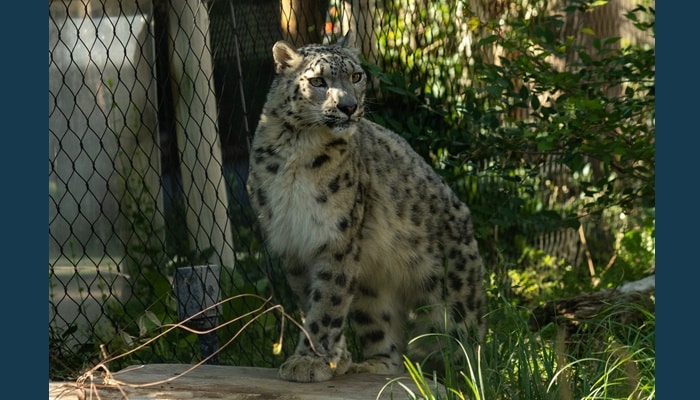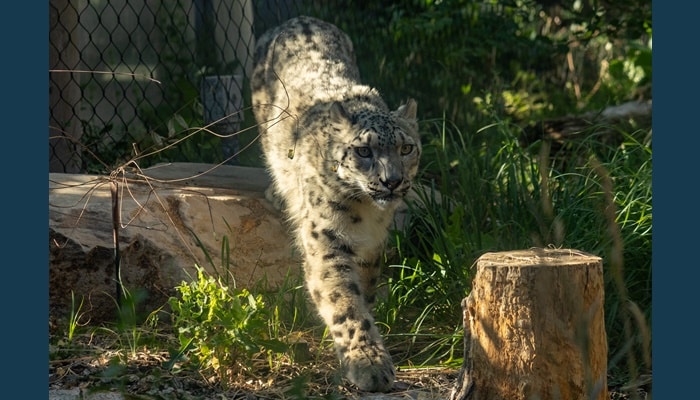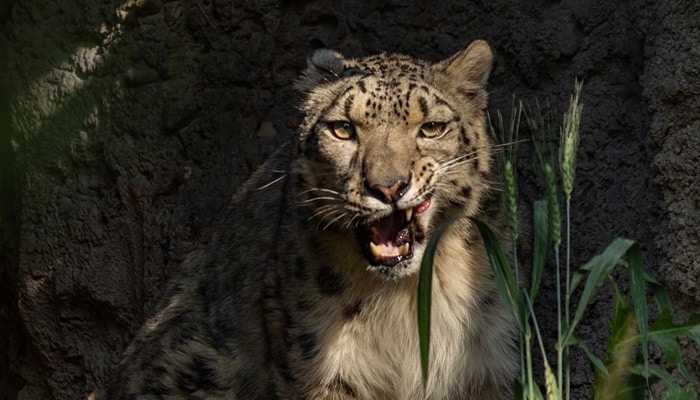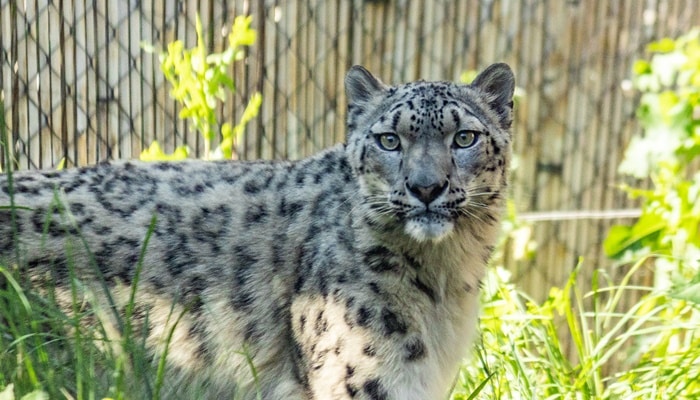SALT LAKE CITY, Utah, May 28, 2024 (Gephardt Daily) — Babs, one of Hogle Zoo‘s snow leopards, is with cub.
She is expecting her first just weeks from now, in early June, the zoo announced Tuesday.
“Hogle Zoo’s animal care and animal health teams closely monitor Babs as she progresses through her three-and-a-half-month pregnancy,” the statement says.
Babs came to the zoo in 2021, from Ohio‘s Toledo Zoo, on a breeding recommendation from the Association of Zoos and Aquariums (AZA) Snow Leopard Species Survival Plan (SSP).
The SSP paired Babs with Hogle Zoo resident Chim, an 11-year-old snow leopard.
This is Babs and Chim’s first breeding season together and first pregnancy for Babs. The SSP indicates that first-time snow leopard moms aren’t always successful, meaning there is a chance the cub may not survive this pregnancy or birth.
“Under human care and in their natural habitats, first-time moms across animal species have a much steeper learning curve than experienced moms,” said Clair Hallyburton, Hogle Zoo’s associate director of animal care. “We collaborate with other AZA-accredited zoos to continually develop our knowledge and understanding of snow leopard pregnancies and births and work to facilitate natural processes for resident animals.
“Our animal care and health teams have been doing voluntary ultrasounds with Babs, adjusting her diet, continuing training sessions, planning overnight watches, and monitoring camera systems to help prepare Babs and the zoo.”
Snow leopards are found throughout Asia, from the southern Himalayas westward through Pakistan and north to the Russian mountain ranges. They are known for their elusive and mostly solitary nature. With pale gray coats that act like natural camouflage, snow leopards have evolved to live in some of the most remote environments and are often referred to as the “ghost of the mountains.”
Threatened by habitat loss, declines in natural prey species, and illegal hunting, snow leopards are a vulnerable species.











